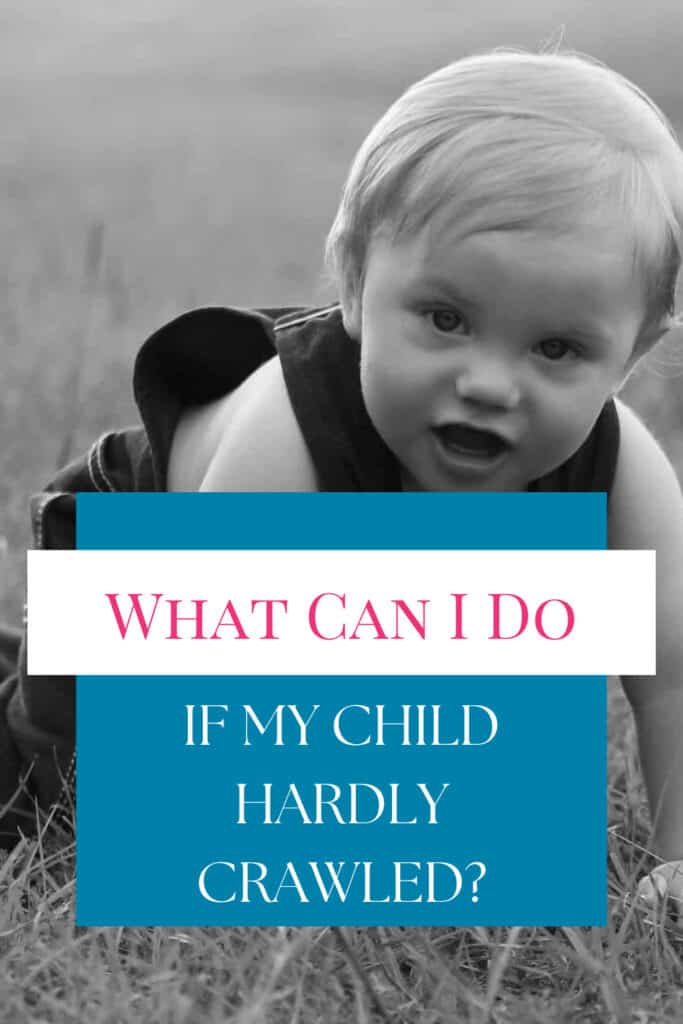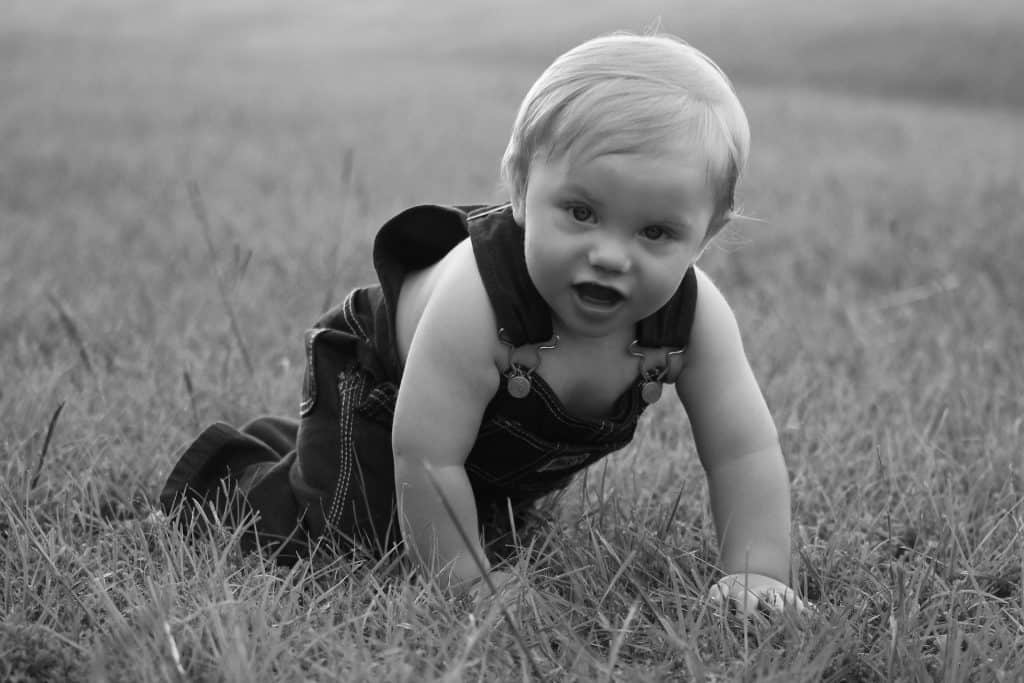If your child didn’t crawl don’t panic!
Guilt can take centre stage when you’re a mom. When moms realise their child didn’t crawl or not for long enough, and that it might have played a role in their child’s symptoms of ADHD or learning difficulties–they blame themselves and worry it’s too late.
It’s not!
You might be surprised to learn how researchers discovered just how important crawling is. No, they weren’t trying to ‘fix’ kids with ADHD or learning disabilities. They were working with adults who had suffered brain trauma and head injuries.
Simulated Crawling Offers Hope For Even Brain-Injured Adults
The discovery of how movements that imitate crawling can shape brain development was discovered by Dr. Dorman and Dr. Delacato who were working with patients who had brain damage and had lost the ability to read, write, do math or process as they had prior to the brain damage.
These doctors went all over the world to study how children develop the skills to be able to learn the very activities that were impaired in their patients. They mapped children’s brains and their core finding was that infants’ brains develop through early movement these skills were not hard-wired or something that children were born with. This offered incredible hope that these doctors could therefore help their patients regain the cognitive skills they once had.
Crawling Activates Improves Auditory & Visual Processing
Among the many movements that help to develop different areas of the brain they found that crawling was imperative to developing the areas of the brain that were necessary for global learning, reading, writing and math. They determined that when children crawl the act of looking up stimulated the vision centre in the brain.
As many parents know, auditory processing plays a huge role in ADHD. What these researchers also found is that as a baby crawled and moved his head, either to look around and to listen to the sounds around him such as his parents encouraging him, the auditory centre of his brain is also being stimulated.
Crawling simultaneously stimulated the vision centre and the auditory centre of the brain which also needs to work together simultaneously for children to read.
Many children struggling with reading and writing either have a weakness in one or both areas. Sometimes the two areas are working reasonably well individually but they are not working well together. For fluent reading to occur, the auditory centre needs to be work with the vision of the brain at the same time.
As mentioned in my last article on the importance of crawling, good hand-eye coordination is essential for fluent reading and crawling develops this when a baby must match their actions to their vision.
How Simulated Crawling Changed the Brains of Adults
From their research, Dr. Dorman and Dr. Delacato had their brain injured patients do regular movements that imitated and had the same effect on the brain as crawling.
We’ve all heard you can’t teach an old dog new tricks but most of these adults gained complete recovery of their learning, reading, writing and mathematical abilities through these exercises which developed the brain from the ground up.
Linking the Two Brain Hemispheres
Crawling integrates communication between the left and right sides of the brain and research has shown us that this is necessary to achieve optimal cognition. Everything from ADHD to autism to schizophrenia has been found to be a result of faulty integration within the neural systems which basically translates as a disorganized brain where certain regions and hemispheres are not balanced.
Thanks to the latest medical technology, we now know and can even see underdevelopment in the corpus callosum which acts as a bridge between the left and right sides of the brain and how a weak corpus callosum plays a significant role in learning disabilities, ADHD, autism and even seizures.
Slower Movements Builds Better Brains
Doing the movements slowly is essential. Slower movement has a more profound effect on the brain. The ancient Chinese mind-body exercise, Tai Chi has such profound effects on the brain because slow movement demands precision which better solidifies brain connections and brain organization.
Exercises that simulate the effects of crawling as well as crossing the midline-means crossing the left side of our body over the rights side and vice versa. Neuroscience has revealed that physical coordination must come before cognitive coordination and crossing the mid-line is essential for that to occur.
The Amazing Benefits of Cross-Crawl
Cross crawl is a movement that simulates crawling, allows electrical impulses and information to move easily from one side of the brain to the other which is essential for cognitive processes.
Cross crawl also stimulates the connection between the brain and the body. When there is not a strong connection between the brain and the body, the body has a hard time receiving signals from the brain and vice versa. Not only can this contribute to cognitive and mental health disorders but it can also contribute to auto-immune conditions that we so often see in children who struggle with learning and behaviour.
Cross lateral movements like cross crawl has many benefits like building core strength and improving gait, developing eye teaming necessary for both reading, writing and focus, and it creates body awareness which strengthens spatial skills and of course as the left and right brain are better able to communicate it promotes a whole-brain learner.
Getting Started
Whether this movement is difficult or easy for your child it reaps amazing benefits for the brain. Don’t stress if your child may have difficulty with crossing the mid-line.
If communication between the left and right side is weak they may have a hard time crossing their opposite limb over and want to switch hands, or they might move the whole trunk of their body instead of just their limbs. The key here is patience and practice until your child achieves precision.
This exercise may seem simple but crossing the mid-line is essential for eye tracking-going left to right when reading as well as writing as they use their dominant hand to move across the page they are also crossing their body.
Why Smart Kids Hate to Write
While some kids can move their hand across their body to write they might hate writing or have difficulty focusing while writing because crossing the mid-line requires so much concentration that they cannot concentrate on what they are doing. This is often known as dysgraphia and it is no wonder many of these kids hate writing.
The more you make this into a game the more likely your child will want to do this. Don’t tell them it’s homework. Call it Simon Says or any other game to create buy in.
The Movements that Simulate Crawling
Exercises like the robot, cross crawl, bird-dog, lazy 8’s and cat-cow all help to simulate crawling and integrate the STNR reflex that I talked about in my last article. If children do now crawl long enough then this reflex can fail to integrate and this can prevent other cognitive processes from occurring fluidly.
Find out exactly how to do these movements by going to the Building Better Brains YouTube channel for the demonstration.
Contact us to learn more about the six-month program the Full Potential Clinic that screens your child for retained reflexes, brain organization and creates an individualized plan to help your child go from surviving to thriving


